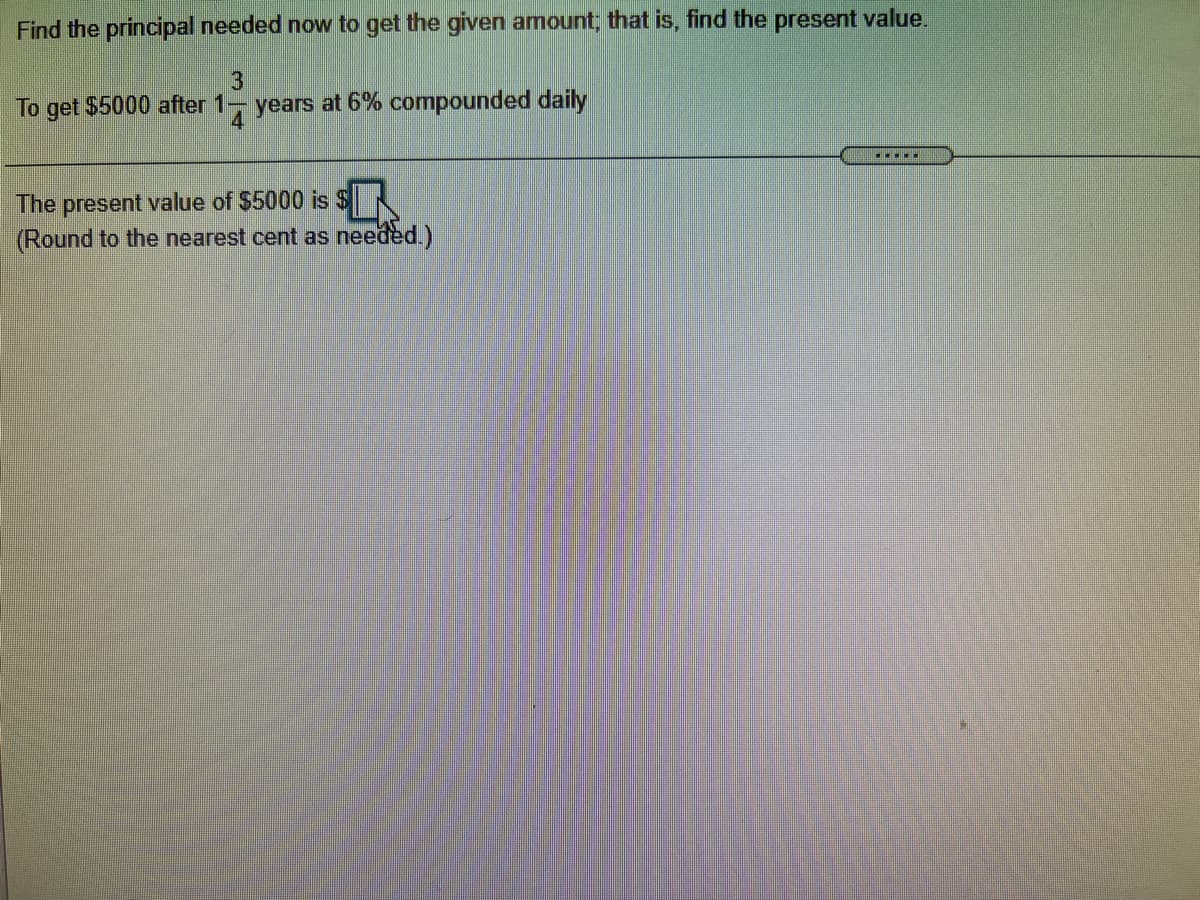If the rate of inflation averages r per annum over n years, the amount A that $P will purchase after n years is A= P(1-r)", where ris expressed as a decimal. If the inflation rate averages 2.5%, how much will $1,500 purchase in 4 years? ...... In 4 years, $1,500 will purchase $ (Round to the nearest cent as needed.)
If the rate of inflation averages r per annum over n years, the amount A that $P will purchase after n years is A= P(1-r)", where ris expressed as a decimal. If the inflation rate averages 2.5%, how much will $1,500 purchase in 4 years? ...... In 4 years, $1,500 will purchase $ (Round to the nearest cent as needed.)
Chapter9: Sequences, Probability And Counting Theory
Section9.4: Series And Their Notations
Problem 56SE: To get the best loan rates available, the Riches want to save enough money to place 20% down on a...
Related questions
Question
100%
Help me please

Transcribed Image Text:If the rate of inflation averages r per annum over n years, the amount A that $P will purchase after n years is A= P(1-r)", where r is expressed as a decimal.
If the inflation rate averages 2.5%, how much will $1,500 purchase in 4 years?
In 4 years, $1,500 will purchase $
(Round to the nearest cent as needed.)

Transcribed Image Text:Find the principal needed now to get the given amount; that is, find the present value.
To get $5000 after 1- years at 6% compounded daily
The present value of $5000 is $
(Round to the nearest cent as needed.)
Expert Solution
This question has been solved!
Explore an expertly crafted, step-by-step solution for a thorough understanding of key concepts.
This is a popular solution!
Trending now
This is a popular solution!
Step by step
Solved in 2 steps with 1 images

Recommended textbooks for you

